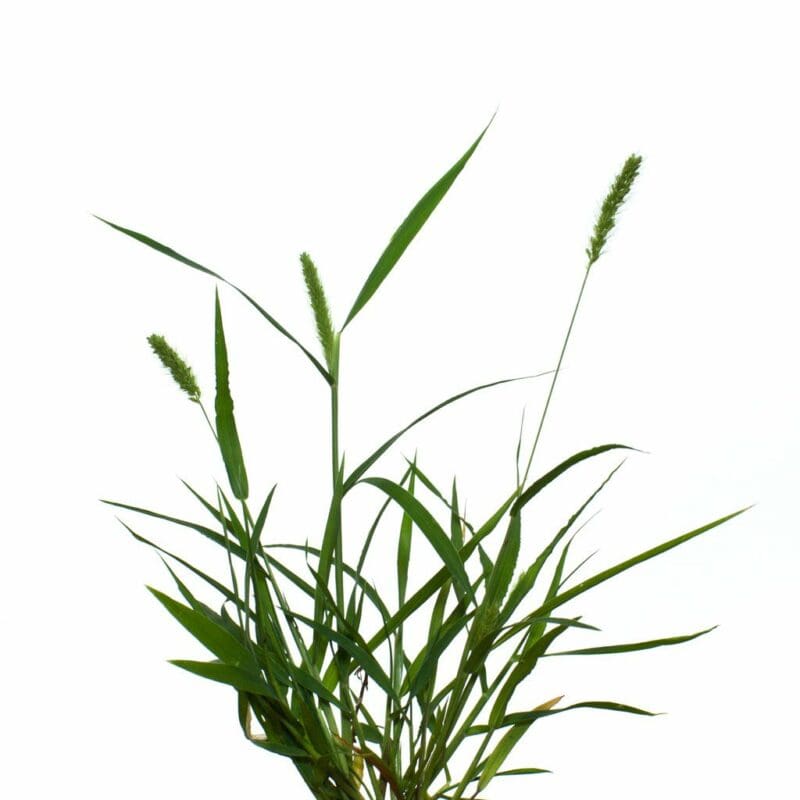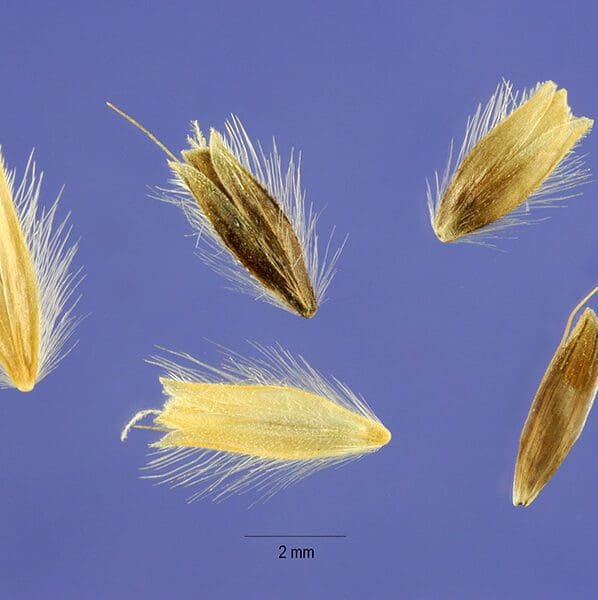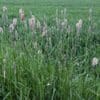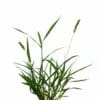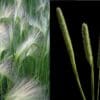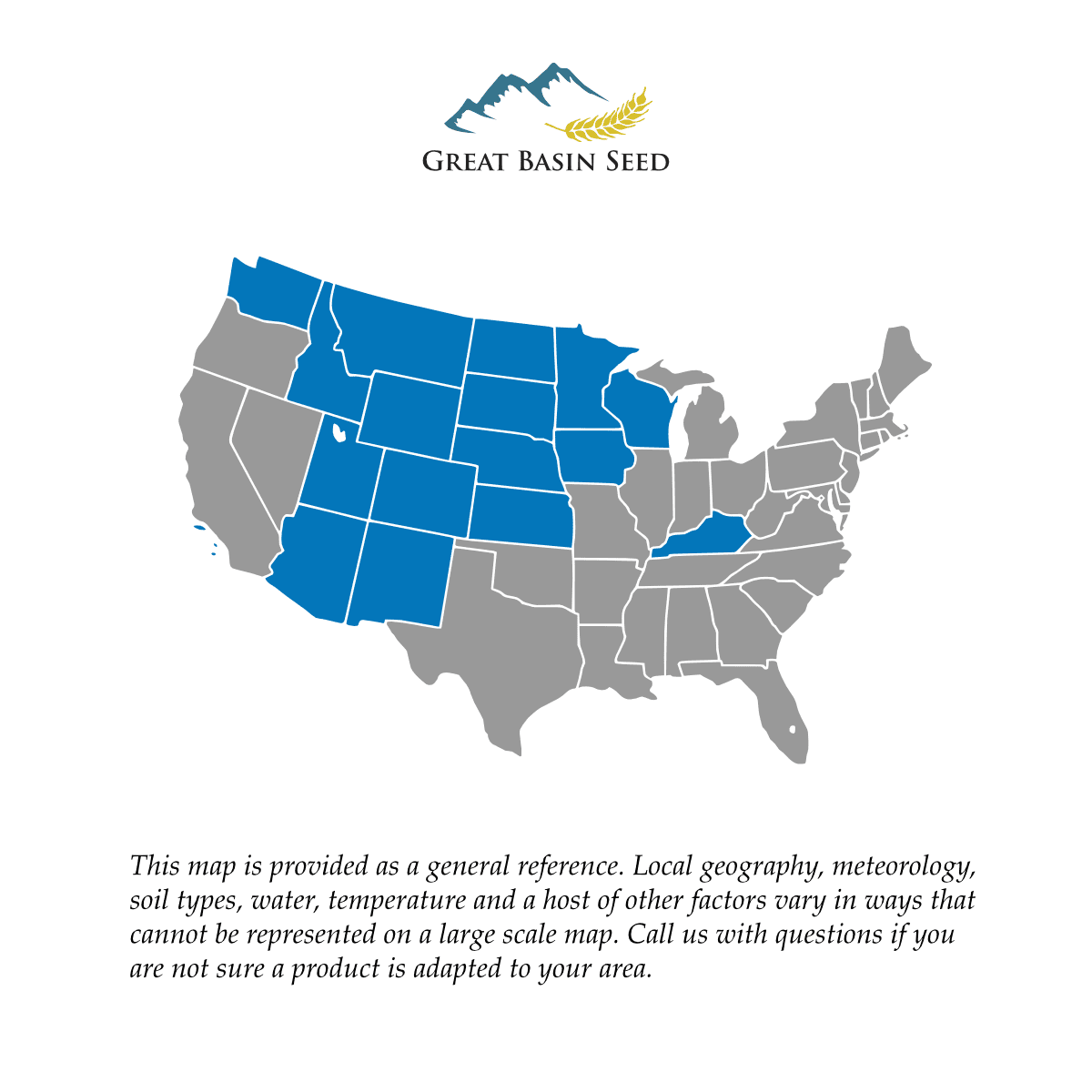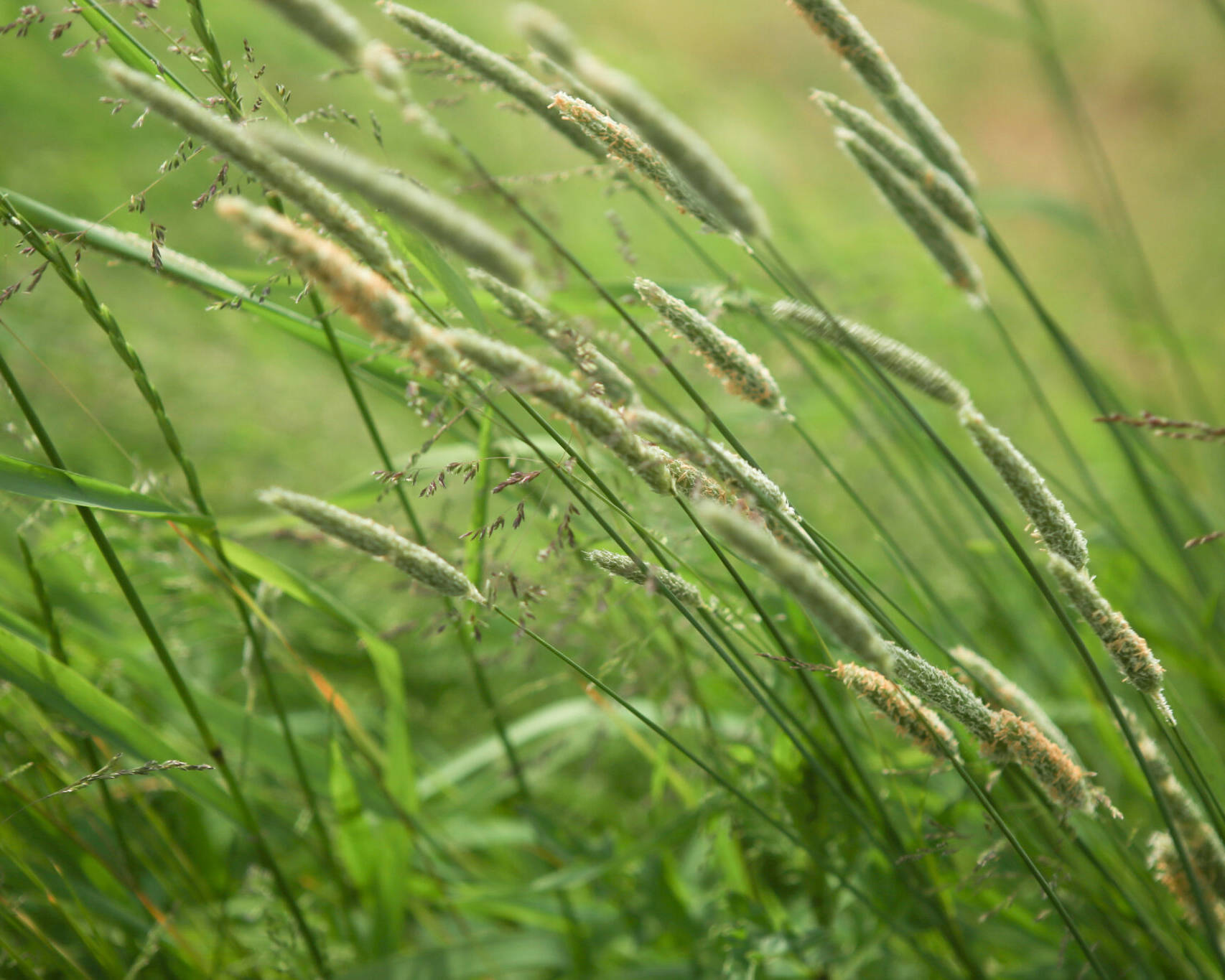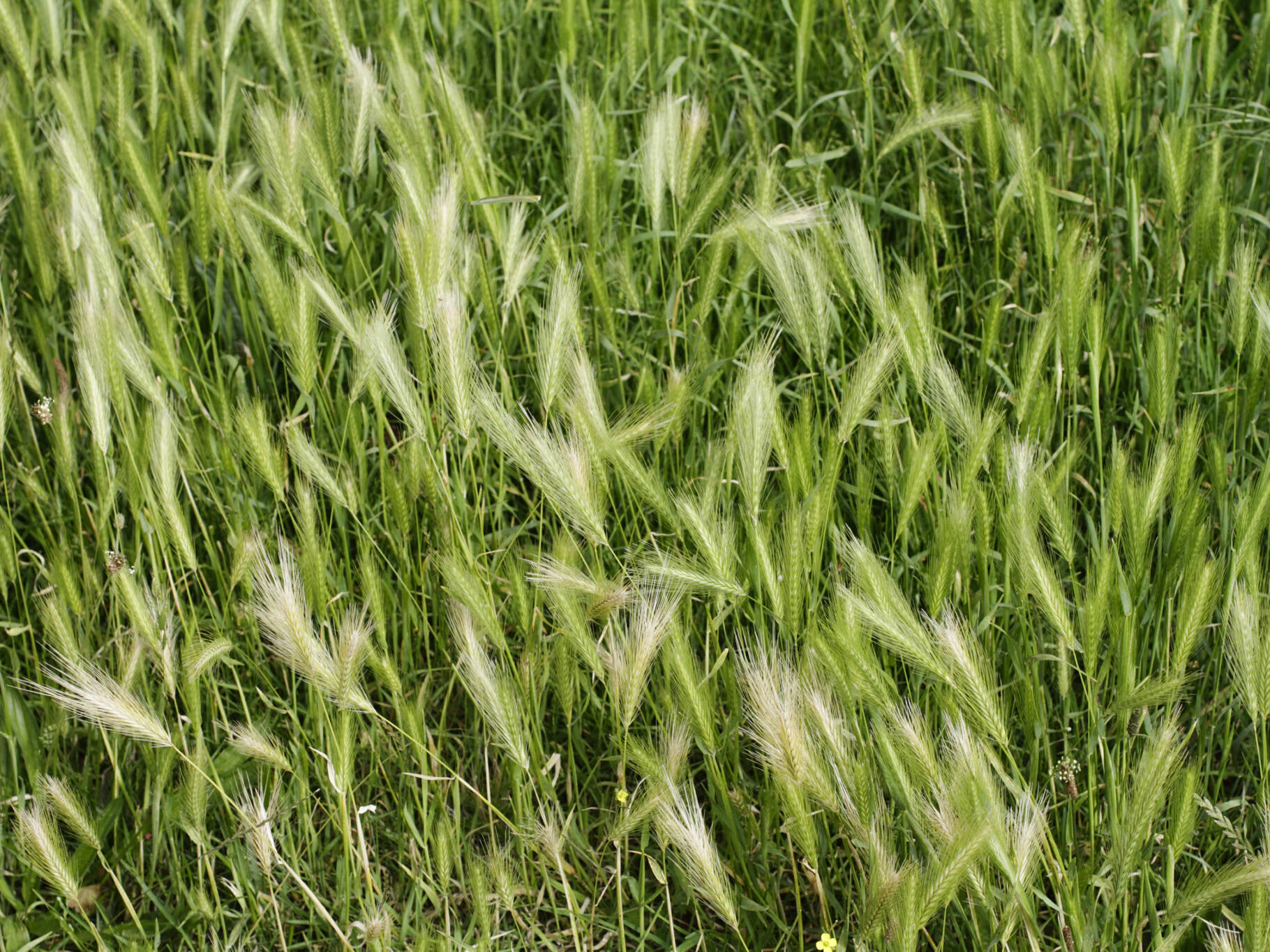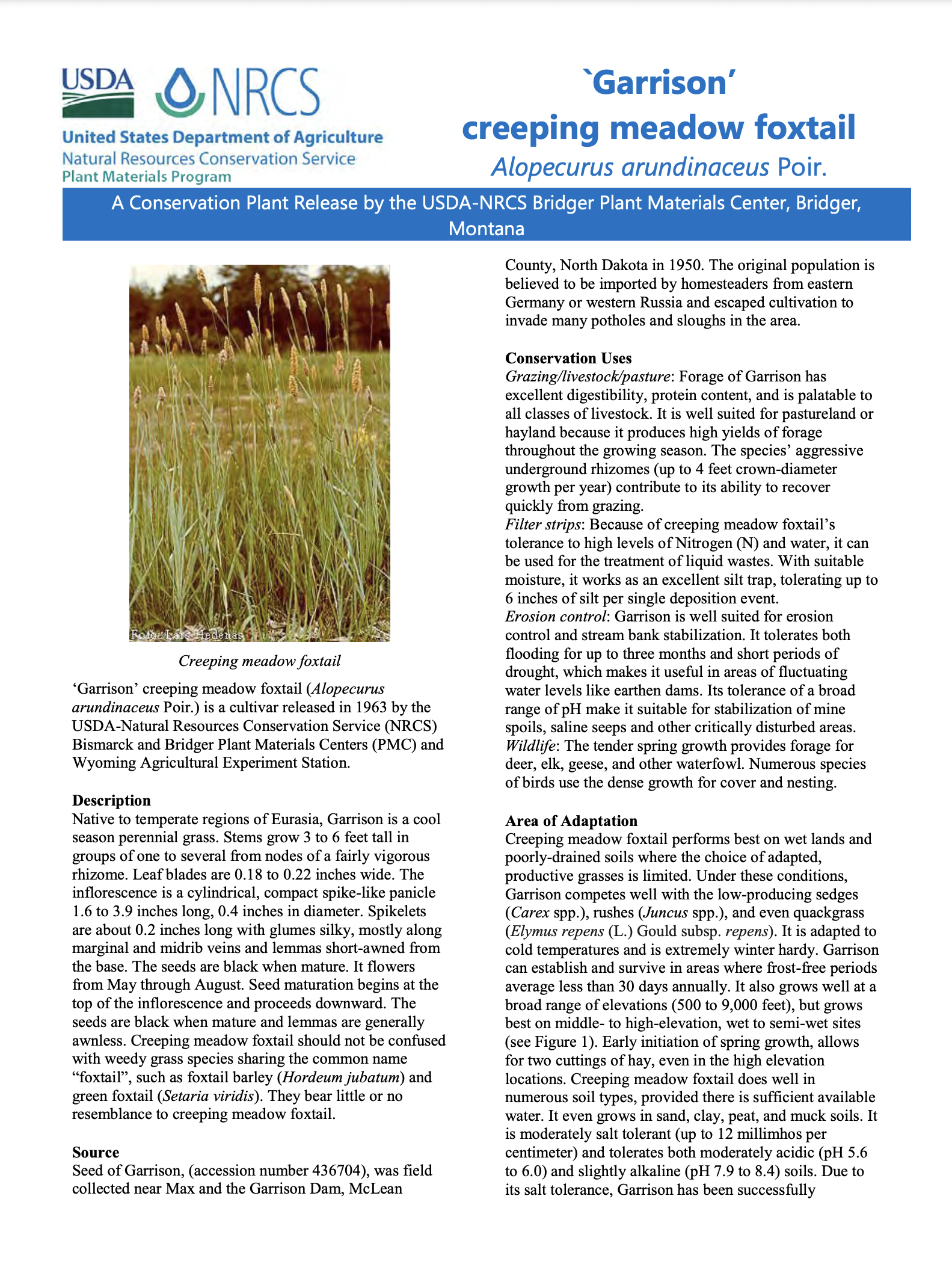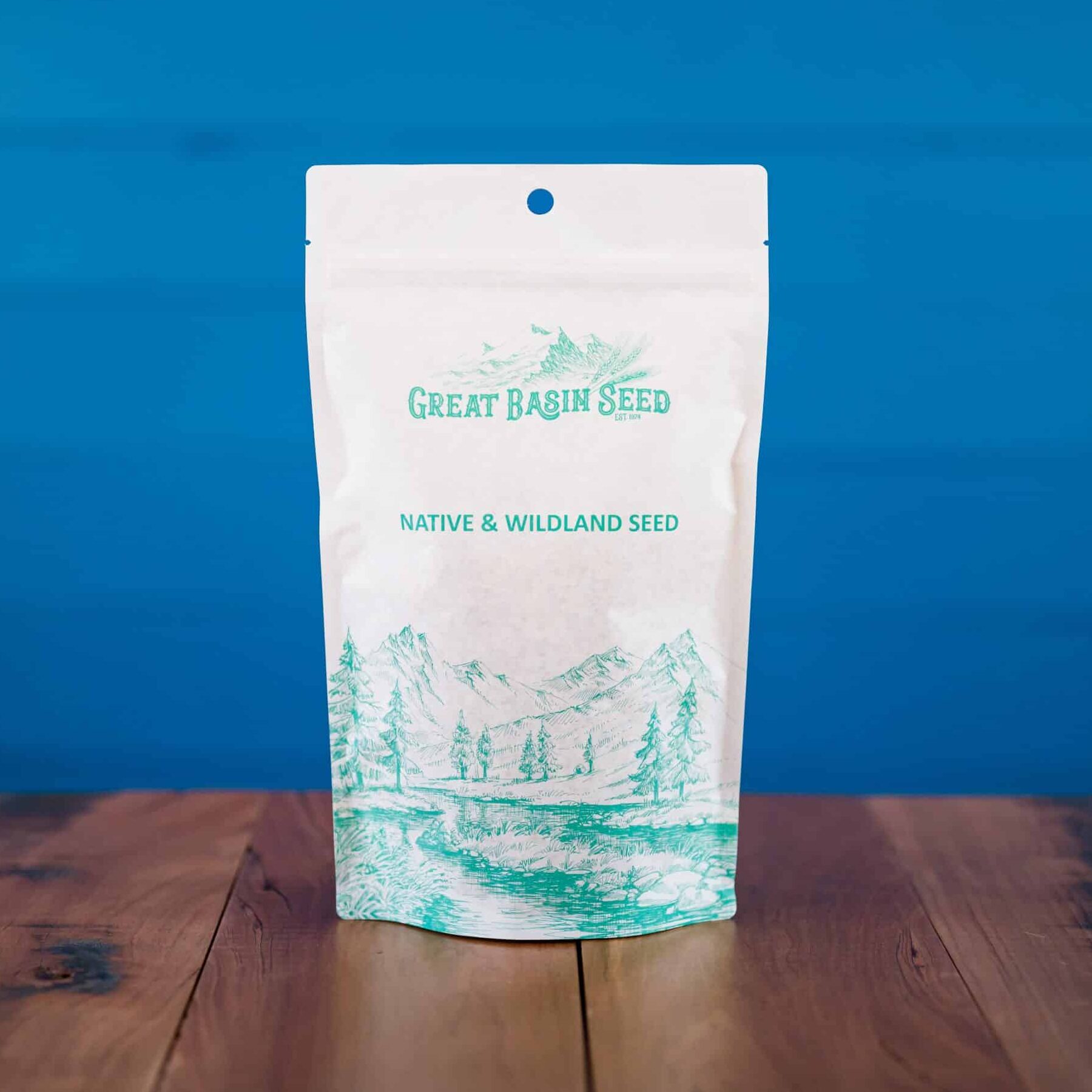Garrison Creeping Foxtail
- Strongly rhizomatous grass, forming a dense sod
- Adapted to a wide range of poorly drained soils
- Excellent tolerance to frost
- Not to be confused with Foxtail Barley.
Min. to Max. Annual Precipitation
72in.
Average Max. Height
Also know as creeping meadow foxtail, a cool-season, sod-forming grass. Strongly rhizomatous forming a dense sod, well adapted to wetland pastures. Tolerates strongly acidic to slightly alkaline environments. Robust and maintains growth throughout the growing season. Averages 3-5 feet tall, but can grow as high as 7′. Adapted to periods of total water inundation and high water tables but also drought tolerance.
Do not confuse Garrison Creeping Foxtail (Alopecurus arundinaceae) with Foxtail Barley (Hordeum jubatum). They are not the same.
Garrison Creeping Foxtail (Alopecurus arundinaceae), also know as creeping meadow foxtail, is a cool-season, sod-forming grass introduced from Eurasia. It is strongly rhizomatous grass, forming a dense sod. Garrison is robust and maintains growth throughout the growing season, producing an almost continuous, quality forage. It averages 3-5 feet tall, but can grow as high as 7′ in the right conditions. Garrison is adapted to periods of total water inundation and high water tables but also demonstrates excellent drought tolerance. Garrison Meadow Foxtail (Alopecurus arundinaceae) is NOT Foxtail Barley – see the pictures and information below for additional information.
Well adapted to wetland pastures, Garrison Creeping Foxtail will withstand up to 60 to 70 days of inundation once established. Adapted to a wide range of poorly drained soils. Can tolerate strongly acidic to slightly alkaline environments. Garrison is exceptionally frost tolerant where frost-free periods are less than 30 days. It is moderately drought tolerant, but best performs best in areas receiving 18 inches or more annual precipitation.
‘Garrison’ is the most popular variety of foxtail and is an excellent forage producer. It maintains palatability to livestock even after the plant begins heading. Ideal hay or pasture on sites too wet to mow or graze in early summer. Garrison forms vigorous sod, resulting in an effective erosion barrier and is an excellent for erosion control on ponds, lakes, streams or waterway shorelines. The plants provide good nesting cover for waterfowl.
Garrison Creeping Meadow Foxtail is an aggressive species and establishes quickly. Increase the seeding rate to 10-12 pounds per acre for a heavy first-year crop. However, because garrison establishes well and spreads quickly, a heavier seeding rate will return little benefit after the second year of establishment. Garrison is frequently sown in wet “sumpy” areas and broadcast method is most common. Farmers have found good success in broadcasting seed then feeding their livestock over the top. Livestock hooves aid in setting the seed into the ground, resulting in quicker and more complete establishment. See the “establishment” tab above for additional information.
Garrison Creeping Foxtail: coated seed vs. non-coated seed:
Great Basin Seed sells coated Garrison Creeping Foxtaill seed. Non-coated Garrison Foxtail seeds are light and “fluffy” and easily blow away in the wind. Coating is a spray-on clay that improves sowing and plant establishment. Clay coating makes the seed size more uniform and more compatible in seed mixes where uncoated garrison is considerably larger and more “fluffy”. By itself, coated garrison feeds more evenly and uniformly, clogs machinery less and is easier to work with. The clay holds seed on the ground, preventing it from blowing away in the wind and ensuring good contact between the seed and soil bed. It also holds early moisture and nurses the seed through the germination process. Coated with Pinnacle QuickStart.
Garrison Foxtail is coated with clay. It is colored, and the colors vary from year to year. The coating is NOT a chemical treatment, and it is not harmful. No chemicals have been added to the seed. The clay coating aids in the following:
1. Germination is enhanced when the clay absorbs moisture and holds it.
2. Establishment is enhanced when the wet clay “sticks” or “tacks” the seed to the surrounding soil.
3. Establishment is enhanced because it prevents the seed from blowing away.
Recommended seeding rate coated garrison foxtail: 8 bulk pounds per acre.
Image courtesy Steve Hurst & USDA PLANTS database.
***Click on the “Quick Plant Facts” tab above for more information.
A TALE OF TWO FOXTAILS
Garrison Creeping (Meadow) Foxtail is NOT Foxtail Barley – do not confuse them. Garrison Creeping Foxtail (Alopecurus arundinaceus) and Foxtail Barley (Hordeum jubatum) are NOT the same. Read below to learn the difference...
Garrison Meadow Foxtail
Garrison Meadow Foxtail
Garrison Creeping Foxtail is 3-6 feet tall with a densely packed columnar seed head with no awns. An unfortunate result of confusion between these two very different plants is that landowners, assuming it to be the weedy pest, immediately dismiss the use of Garrison Creeping Foxtail and do not benefit from a multitude of positive characteristics.
Noxious Foxtail Barley
Foxtail Barley
Foxtail barley (Hordeum jubatum) is a widely distributed and problematic invasive weed. They are not the same. Foxtail Barley is low growing annual, seldom more than 18" tall, with a head that resembles a grain barely head and the tail of a fox or bushy tail squirrel. Long awns are prevalent on Foxtail Barley and the heads turn deep red/purple when they mature.
Garrison Creeping Foxtail NRCS Plant Release
Garrison Creeping Foxtail NRCS Plant Release
PDF version of NRCS Plant Release
Citation: USDA-NRCS, Bridger PMC, Bridger, Montana 59014. Revised February 2013.
Helpful Links
Additional information about this product can be found on the academic websites linked below.
Synonyms
Many plants have more than one common and scientific name. We've listed a few of them below.
- Garrison Creeping Foxtail
- Alopecurus arundinaceus Poir.
- Creeping Meadow Foxtail
Quick Plant Facts
| Common Name: | Garrison Creeping Foxtail |
|---|---|
| Scientific Name: | |
| Lifespan: | |
| Origin: | |
| Plant Type: | |
| pH Tolerance: | |
| Seed Count | 750,000 seeds/lb. |
| Growth Height: | |
| Root Form | Bunchgrass |
| Sowing Rate | 1-3 PLS lbs. per Acre |
| Min. Precipitation | 20 – 25 inches |
| Best Sowing Time | Spring or Fall |
| Growth Season: | |
| Max Sowing Depth: | |
| Elevation of Occurance: | |
| Hardiness Zones: | |
| Select a Package Size and Quantity | 8 oz. Pouch (0.50 lbs.), 1 lb. (by the pound) |
Before the practice of coating seed became commonplace, establishing a stand of Garrison Creeping Foxtail was frequently problematic. Owing to their light and fluffy nature, seeds easily blew easily in the wind or would hang-up on understory, resulting in poor germination rates. Drilling was the best way to establish a stand, but getting the fluffy seed to flow through the seeder box was also a challenge.
Coated seed makes broadcasting a simple and effective method. The coating weighs down the seed, packs the “hairs” that catch wind and serve to “stick” the seed to the ground. When a drill is used, seed flows evenly. The nutrients added to the coating nurse the seed through the germination process and hold moisture, increasing seed establishment.
Standard broadcast and drill methods work well with coated Foxtail seed. For “sumpy” areas, or sites where traditional seeding methods are not practical or available, we have found that “feeding over” a broadcast seeding produces excellent results. This is usually achieved by broadcast seeding your site, then turning livestock into graze or feed over the top of the seeding. Once the seed is tromped in, pull the livestock off the site and allow the stand to establish.

